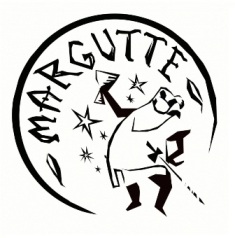SILVIA PIO (edited by)
The Albero Project, published by Margutte, is a multilingual translated project based on Richard Berengarten’s poem, TREE. Translations of the poem into ten languages appear here.
The project has now been enriched by a new work of art. This short film by Geneviève Guétemme interweaves three versions of the poem: English, recited by Richard Berengarten; Irish Gaelic, recited by the translator, Gabriel Rosenstock; and the Italian version by Silvia Pio, as scrolling text. The soundtrack is by Derek Ball.
An interview with Geneviève Guétemme
Where and how did you meet Richard?
G. G. As an artist, I have always been interested in poetry. My PhD in History of Art focused on the margins of the literary and the visual, and I have been working with poets – illustrating poetry – for many years.
I met Richard at a reading in Cambridge. We had a chat and we both realised we had a common friend: Béatrice Bonhomme (French poet, academic and editor of the Journal Nu(e) – which specialises in contemporary poetry). She was planning a special issue on Richard’s book The Blue Butterfly and Richard suggested that I might do some drawings. I did seventeen charcoal drawings and ten of them were selected for publication.
This first collaboration led to others– a short silent film for the launch of Notness and a set of eight postcards for the launch of Changing and, after that, the TREE video.
How did the idea of the video emerge? Where did it come from?
G. G. In 2015, Cambridge University Library offered to host the launch of Notness (Richard’s most recent book at that time), following their acquisition of his archives. For this launch, Richard invited me to come up with ‘something visual’ and I agreed. When I discovered that we couldn’t post or fix anything to the walls but that the room had a set of screens, I decided to make a short video.
My favourite techniques include drawing, photography and film, and I had already enjoyed the challenge of putting Richard’s words into moving pictures for Notness. So, when he told me about TREE, I decided to try a similar approach. It also occurred to me that video – as a medium that functions in sequential time – would fit the structure of such a long poem, and would also enable me to bring out aspects of rhythm, such as acceleration and deceleration, and to incorporate ‘shakiness’ and other camera movements. I also took this as an opportunity to explore the connection between the filming time and the double length of a poem that was being read in two different languages. The idea was that the film would connect nature with Derek Ball’s soundtrack for two voices, through the simultaneous processes of viewing, reading and listening – and that it would involve these three processes in a kind of dance, so that moving branches and leaves would intertwine with English, Gaelic and Italian words.
Where were the sources of your inspiration for the video?
G. G. My work always builds itself slowly, layer by layer. It’s a kind of sedimentation process. This film took several months to find its structure. Richard told me about the project in June and I spent my summer taking every opportunity to film trees – during family visits to France and Holland, around our house in Cambridge, waiting for the bus, in town, out of town, and so on …
I collected a number of rushes with all types of trees in all sorts of weather and light conditions. These takes usually lasted between one and three minutes. I filmed them while walking, cycling, and from the back seat of the car. Every now and again I’d glance at this collection and I started editing them in September, giving myself three weeks to finish. I wantedthe whole thing to be completed in time for the TREE Festival in Mondovi (Italy).
As things turned out, eventually I simply imported the thirty-minute soundtrack into my editing software and started to work on a visual rhythm. Finally, when Richard gave me Silvia Pio’s Italian translation, it fitted entirely naturally into the film’s overall structure, so that the blend of auditory and visual experience with the multiple images of nature was strengthened. The Italian version made the experience complete because it embodied and extended the intellectual and sensual spectrum of poetic discourse itself, enriching the connections between languages in poetry.
What are you going to do with this movie?
Derek Ball and I are looking for ways of presenting the film at international poetry festivals. It may get linked to a new set of drawings and films that I’m planning to build onto a list of process-words (verbs) such as walking, passing, and breathing – as a continuing exploration of movement connected with language.
More about the collaboration between Berengarten and Guétemme: Exploring the links between visual arts and contemporary poetry
For the Albero Project, click on the tag.

